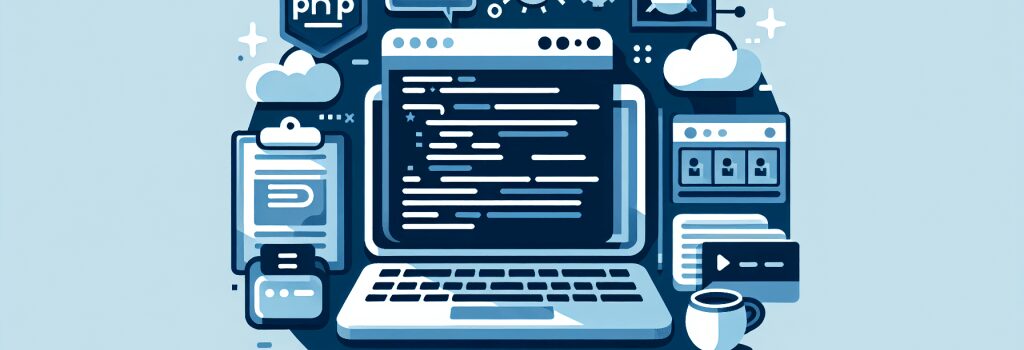Showcasing Your PHP Skills Through Backend Projects

Sure, crafting an informative article on showcasing PHP skills through backend projects will not only help aspiring developers demonstrate their prowess but also make your book a valuable resource. Let’s dive into structuring the article content with SEO practices in mind.
—
In today’s competitive job market, having a portfolio that stands out is crucial for web developers, especially those specializing in PHP. This dynamic, server-side scripting language is a cornerstone of web development, powering everything from small websites to complex applications. By creating and highlighting backend projects in your online portfolio, you showcase your technical expertise, problem-solving skills, and commitment to professional growth. Here, we delve into how to effectively present your PHP skills through backend projects.
Selecting Projects That Highlight Your Skills
When selecting projects to showcase, variety and complexity matter. Your portfolio should demonstrate your ability to tackle different challenges and work with various aspects of PHP and related technologies.
– Custom Content Management Systems (CMS): Developing a custom CMS from scratch shows your understanding of PHP at a deeper level. Tailor it to a specific niche to stand out.
– E-commerce Platforms: Highlighting a project that handles transactions will demonstrate your ability to manage crucial functionalities like payment processing and user data security.
– API Integration: Show your skills in connecting different software tools and technologies by integrating third-party APIs into a project.
Documenting Your Development Process
A well-documented development process not only showcases your technical skills but also your ability to plan and manage projects.
– Problem-Solving: Briefly discuss the problems you encountered during development and how you solved them, highlighting your critical thinking and problem-solving skills.
– Tools and Technologies Used: Mention the tools, libraries, and frameworks that you used alongside PHP. This demonstrates your technical breadth and depth.
– Version Control: Mention your use of version control systems, such as Git. This indicates that you understand essential industry practices.
Adding Interactivity with Frontend Technologies
While your focus might be on backend development, complementing your PHP projects with frontend technologies like HTML, CSS, and JavaScript can make them more interactive and user-friendly.
– Responsive Design: Ensure your projects are responsive and accessible on various devices. This shows your commitment to user experience.
– JavaScript Integration: Use JavaScript to add dynamic content and interactivity to your projects, showcasing your ability to work across the full stack.
Presenting Your Projects
How you present these projects on your online portfolio can make a significant difference. Use the following tips to ensure your portfolio stands out:
– Project Summaries: For each project, include a brief overview, your role, the challenges faced, and the solutions you implemented.
– Screenshots and Demos: Visual aids can help potential employers or clients understand what you’ve built. Including live demos or video walkthroughs is even better.
– Testimonials: If you’ve worked with clients or contributed to open-source projects, include their testimonials about your work and professionalism.
Continuously Updating Your Portfolio
The field of web development is ever-evolving, and your portfolio should reflect your growth and current trends in the industry. Regularly update your portfolio with new projects, technologies, and skills that you acquire.
In conclusion, effectively showcasing your PHP skills through backend projects requires careful selection and presentation of your work. By following the guidelines outlined above, you can create an online portfolio that not only demonstrates your technical abilities but also tells the story of your professional journey as a web developer.
By incorporating SEO best practices, such as targeted keywords and structured content, this article not only serves as a comprehensive guide for developers looking to showcase their PHP skills but also ensures wider visibility across search engines, connecting aspiring developers with the resources they need to succeed in the competitive field of web development.
—
This structure should ensure your article is both informative and SEO-friendly, making it a valuable addition to your book on becoming a web developer.


